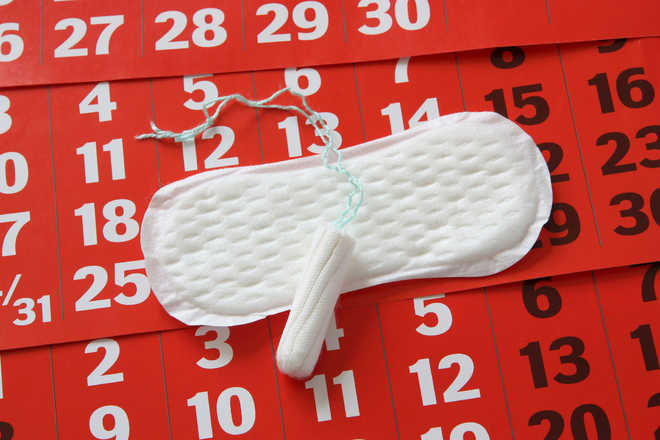
Archana Datta
India, home to 355 million menstruating women and girls, poses a serious environmental hazard by not having a proper system of disposal of a waste load of about 1.021 billion pads per month.
As the world talks about menstrual hygiene on May 28, has ‘period’ finally crossed the ‘zone of silence’. India is home to 355 million menstruating women and girls, nearly 30 per cent of the country’s population. How has it fared in managing this critical health issue?
A few days back, when asked, a handful of wide-eyed VII standard girls of a government school in Delhi and a few others from a slum resettlement colony in the South-West Delhi blurted out in unison, ‘No, we don’t know anything about the aurat-wali bimari (women’s disease), either from home or school’. However, the girls shyly admitted that since its onset, ‘we do get free sanitary pads from the school’. The programme assistant of the CASP, Delhi, which runs the complementary education classes for these underprivileged girls, said government schools get free sanitary napkins since 2017 as part of the Kishor Swasthya scheme.
In 2012, a countrywide study sponsored by the Bill & Melinda Gates Foundation revealed that ‘71 per cent of girls in India had no knowledge about menstruation before their first period’. The founder of Women Endangered, Suparna Chaddha, who conducts #LetsTalkPeriod campaign in and around Delhi, agreed that the ‘complete absence of conversation around this natural process is a big challenge’.
While the 2012 report of the Indian Council for Medical Research (ICMR) disclosed that 38 per cent menstruating girls did speak to their mothers, but many mothers, not knowing how to explain it to a teenager, were of no help. A Ministry of HRD survey in 2015 reported that ‘teachers in 63 per cent schools in villages, never discussed about period, even from the points of view of health or hygiene’.
In 2010, Unicef field study attributed ‘cultural taboos’ and the ‘economic constraints’ as the main stumbling blocks, while the Bill & Melinda Gates Foundation’s study pointed out that ‘girls are largely on a par with boys up to adolescence, but with the onset of puberty, outcomes for girls begin to diverge…’.
In 2014, a research study assessed that ‘nearly 23 million girls drop out of school annually in the absence of sanitary napkins, toilets or proper knowledge’. However, Suparna holds a different opinion. She believes the figures of school dropouts due to periods are a complete misrepresentation of data in the absence of any robust research, and in most cases, it is the dysmenorrhea or pain during menses, not unique for girls in India, as 46 per cent of girls in the USA are also found to miss school due to period pain’.
Menstrual hygiene management (MHM) received serious attention in India’s health discourse only in 2015, when a policy guideline was put in place. Unfortunately, its outcome fell much short of the desired results and the states also did not take it as ‘a top of the list agenda’.
Sanitation insecurity, also a major roadblock, as reports say that, ‘about 636 million are deprived of basic sanitation facilities’ and ‘almost 63 million adolescent girls live in homes without toilet facilities…14 per cent children have no access to toilet facilities in schools….’. Further, in urban India, ‘gender difference’ in sanitation infrastructure leaves women in a position of disadvantage.
The ongoing Swachh Bharat Abhiyan (SBM), which used menstruation as a triggering tool for toilet construction at homes, also faltered due to poor ‘functionality’ and ‘usability’. A WaterAid India representative was categorical that ‘SBM should work beyond infrastructure’.
The issue of ‘period poverty’ still bothers millions of women, as the National Family Health Survey-4, reported that ‘57.6 per cent of women only use hygienic methods…’. Low-cost disposable products like ‘Free Days’ or ‘Suvidha’ are yet hit the wider market.
Expectedly, a group of women at a CASP-run adult education centre in the outskirts of Delhi rued that ‘sanitary pads are not a priority household purchase item for us’. The project manger, CASP, Delhi, Manju Uppadhyay, acknowledged that “affordability is a hindrance and in small towns, women are further handicapped, as they can neither go to a shop or ask a male family member, and sometimes also the local shops are reluctant to keep them in stock”. “Women can really benefit if the entire production and marketing with door to door delivery is done by women self-help groups (SHGs),” she suggested. Unfortunately, barring a few states, the SHGs are yet to emerge as a high volume platform for manufacturing pads.
However, the commercial sanitary napkin market is expected to rise to $631 million by 2023, but low income groups remain off the target. The abolition of GST is also not likely to lower the prices of the sanitary pads. “A manufacturer is not exempted from any input tax, had they been zero-rated, the production cost would have gone down,” said an expert. India also poses a serious ‘environmental hazard’ by not having a proper system of disposal of a waste load of ‘about 1.021 billion pads per month’. In the present scenario, manifold challenges lie before India. The theme of 2019, ‘it is time for action’ is so appropriate for India.
Figure this
- 71% Girls in India has no knowledge about menstruation before their first period, says a study sponsored by the Bill & Melinda Gates Foundation.
- 23 million girls drop out of school annually in the absence of sanitary napkins, toilets or proper knowledge
- 57.6% Women use hygienic methods. Low-cost disposable products like ‘Free Days’ or ‘Suvidha’ are yet hit the wider market.
- 63% Teachers in village schools never discuss about period, even from health or hygiene point of view figures are from various surveys conducted by ngos and government agencies



























